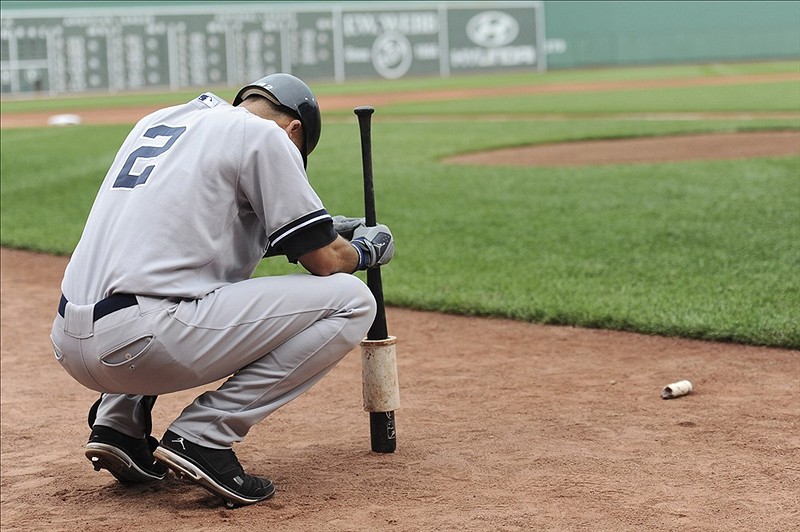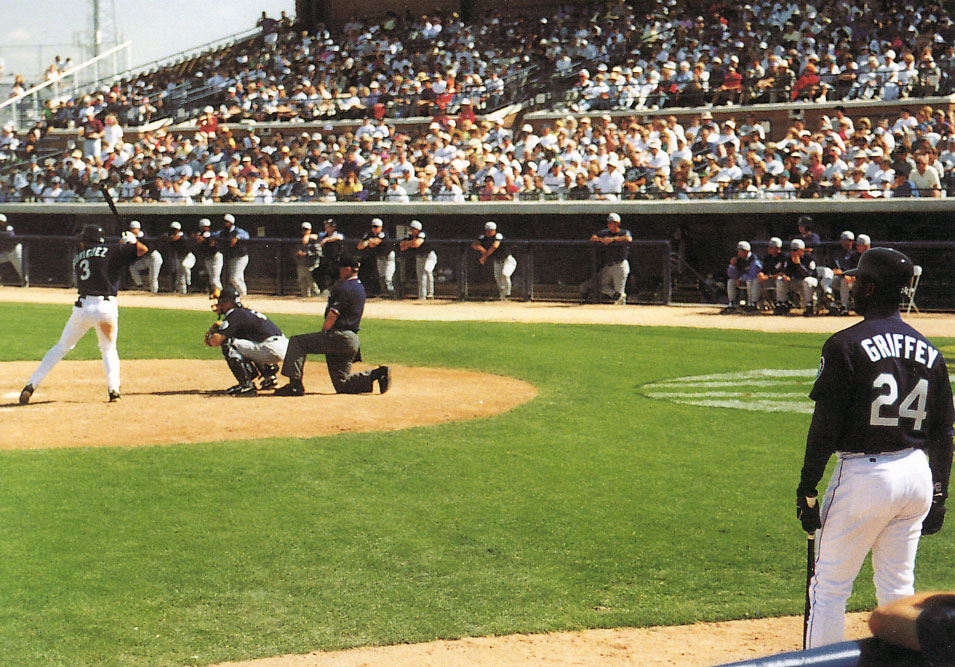The On-deck Circle


As I mentioned earlier, much of hitting is understanding the game. Baseball is a game of situations. Because baseball is a team game, a successful at-bat may not be one that results in a base hit.
Your time in the on-deck circle should be used to analyze the game situation. How can you help your team when it’s your turn to step into the batter’s box? Will a bunt help the team? A fly ball? Should I try to hit the ball to the opposite field? These questions should be asked, and answered, before you step in to hit.
How many times have you watched a ball game on television and seen a player get high-fives from every player and coach in the dugout for making an out? It happens. Do you think they were happy about the player being out? You bet they were! If he got high-fives, he made what is known as a “good out.” One that helps the team win.
Analyzing the situation helps you go up to the plate with a purpose. In and of itself, this mind-set makes you a better hitter. Remember the quote, “You can’t think and hit at the same time,” from earlier in the book? I agree with that. But. . . you can think before you step in the box and you can think before each pitch. The smart hitter is sought after at every level of baseball. Be a smart hitter.

How many times have you seen a ball player kneeling on one knee, seemingly doing nothing? He may even be resting his chin on the knob of the bat. What is he doing? Studying. Perhaps the most important thing you can do as a hitter is study the pitcher. He is the one that controls the ball. The one that tries to fool you bad enough to have you strike out, or have you ground the ball weakly to one of the fielders behind him.
How fast is he pitching? Is his fastball in your comfort zone, or will you have to make some adjustments in your timing to catch up to it? What else is he throwing? Does he have an off speed pitch? Does he throw it differently? How about a breaking pitch? Can he locate it, or does he just throw it up there? What pitch does he likely throw when he is ahead in the count? Behind in the count?
These are all factors that you should pay attention to. There are a dozen or more questions you can answer in the on-deck circle that will better prepare you for each at bat. Remember the quote, “Hitting is timing.” Well, having a good idea of what a pitcher throws in a given situation will make it easier for you to time the pitch and hit it hard somewhere.
I realize that some of this thought process is pretty advanced, but it is provided here so that you can refer to it as you progress in your ability as a hitter.
One last thing about the on-deck circle: Use that time to be prepared for your at-bat. Limber up and pay attention to the game. This is not the time to flirt with your girlfriend in the stands, pose for a picture for your grandma, or do anything else that detracts you from the game. Hitting is a huge part of baseball. Pay attention in the on-deck circle. You will be a better hitter as a result.

